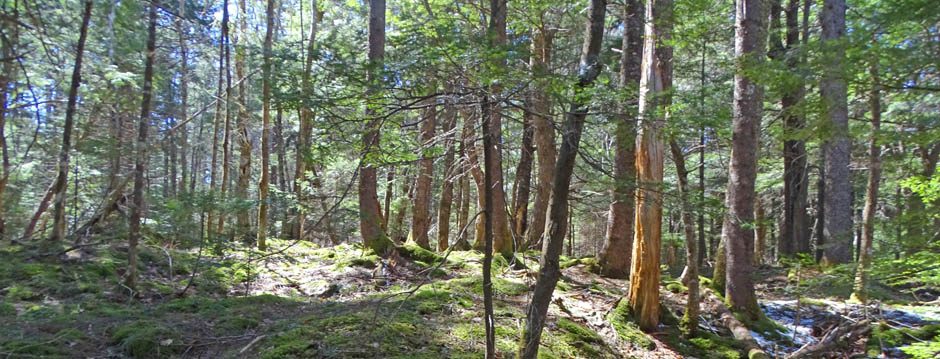For related pages, see Goldsmith Lake Forests & subpages listed there.
——–
– Poster
Comment on the past (DGP): Wow. (Again!). I always thought these lichens were only for the super experts to find, ID…; maybe the latter, but ‘will start to look. Is a hand lens sufficient?
NN: The naked eye is good for spotting them once you get the knack, which is mostly looking sideways on where possible. Then they stand out with their stems and little heads. There’s usually a bristle of them… A hand lens is fine for looking closer. Also a headlamp
or other focused light source for looking in cracks and woodpecker holes. You’re right though that identifying them is far trickier. But perhaps the three we know of from NS who are going to Steve Selva’s stubble lichen Seminar at Eagle Hill in June will come back with some expertise and shareable knowledge.
– Ashlea Hegedus-Viola on Stubble Lichens
Page on this website, reproduced from Friends of Goldsmith Lake Wilderness Area FB page
–Tiny lichens of great value
Philip Bell-Doyon, Université Laval and Troy McMullin, Canadian Museum of Nature. From text – see link for illustrative photos
“Calicioids are a diverse group of tiny, pin-like lichens and fungi that thrive in highly specialized microhabitats such as deep bark crevices, dry old snags, and, incredibly, on other calicioids. Many are restricted to old-growth forests…As old-growth forests become increasingly scarce, so are the organisms that rely on them. Few areas of southern Québec are still untouched by the timber industry, but those that remain likely host unique biodiversity including, as we discovered, remarkable calicioid communities…Our study site is called Ya’nienhonhndeh by the Huron-Wendat First Nation, which means “where we find medicinal plants”, and extends over 400 km2. In total, we identified 34 calicioid species, many of which are rare, including three that had never previously been reported in Québec…This is a story of how tiny lichens and fungi (the calicioids) help to highlight the high conservation value of intact forest ecosystems. It is also a reminder that there are still many organisms in the boreal forest that we know very little about, and others that we may never know about if we allow their last refuges to be cut down.
– Calicioid fungi and lichens from an unprotected intact forest ecosystem in Quebec
Philip Bell-Doyon, Steven B. Selva & R. Troy McMullin 2021 In Ecoscience Volume 28, 2021 – Issue 2 “ABSTRACT
Calicioid lichens and fungi form a diverse polyphyletic group whose species richness is often associated with old-growth forests and ecological continuity. One of the last intact forest landscapes south of the 50th parallel in Québec includes the Ya’nienhonhndeh territory, which has been the focus of a protected area project directed by the Huron-Wendat First Nation for more than ten years. To contribute to the characterization of its conservation value, we report the calicioids from the area. We identified 34 species in eight genera from 187 samples collected in old-growth stands of balsam fir, black spruce and yellow birch. Our four most remarkable discoveries are Chaenotheca nitidula Tibell (n = 11), Chaenothecopsis australis Tibell (n = 1), and C. tsugae Rikkinen (n = 2), which are reported for the first time from the province, as well as Sclerophora coniophaea (Norman) Mattsson & Middelb. (n = 18), which is rare in North America and was previously reported only once in Quebec. As a result of this inventory, the Ya’nienhonhndeh is now the second richest area known for calicioids in Québec, after Parc national de la Gaspésie. We conclude that it is an ancient forest ecosystem whose conservation value is high based on its unique biodiversity, and that it warrants protection.”

